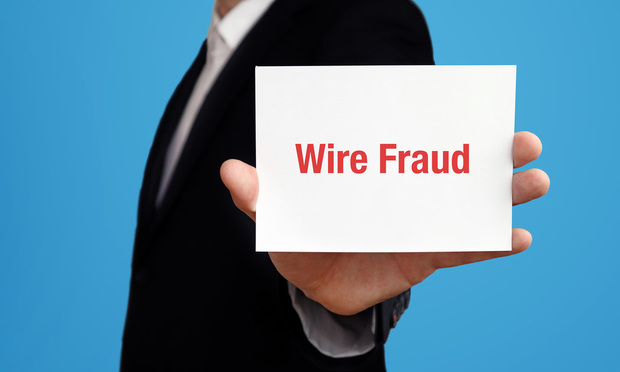The insureds state they were absolutely certain they saw the driver across the intersection “wave them through” to make a left turn before the collision.
Based on that statement, coupled with photos of the damage to the insured's vehicle and a witness who alleges the tortfeasor was speeding through a red light, you are confident you will prevail on liability when this subrogation file goes to intercompany arbitration.
While seeming like a sure win before the arbitration panel, this scenario sets the stage for what every claims professional needs to think about to win intercompany arbitration cases: It is not so much what you believe occurred or what the insured said, but what can actually be proved.
It takes a special skill set to appreciate and highlight proofs in support of a theory in concert with an ability to overcome any challenges with problem evidence that sets the stage for success. If there was not competing evidence or conflicting fact patterns, why is this claim in arbitration?
Cases are won in arbitration based on the evidence presented, complemented by a persusasive written narrative (known as contentions) that urges the arbitrator/panelist to accept a theory. Police reports, witness and insured statements, and even aerial photos of the loss location are all types of evidence which may be submitted in intercompany arbitration.
Let's take a look at evidence methodology for both the applicant (recovery) and respondent (defense) side of claims.
Categories of evidence
The seven core categories of evidence for subrogation arbitration cases are: Direct, demonstrative, documentary, opinion, hearsay, circumstantial and real.
Advocates identify and organize each proof into one or several of these categories and then apply litmus tests to each group, effectively incorporating the strength while simultaneously recognizing and addressing any challenges that need to be overcome.
Keep in mind any particular kind of evidence can overlap into multiple categories, depending on what it is intending to prove. For example, a photo of the damaged car could be both demonstrative and circumstantial evidence.
Here is a look at these seven types of evidence with some tips for effective advocacy:
Direct evidence relates to questions of fact.
This is perhaps the most prominent type of evidence in intercompany arbitration cases as it speaks to individuals with direct knowledge of the loss such as an insured or witness.
Often, direct evidence is presented through a transcribed statement that the arbiter will review for what is said or not said. This evidence is generally straight forward and submitted to prove a fact a party is seeking to establish without a requirement of inference or presumption.
It can still be important to bolster the direct evidence with other proofs toward the totality of your case. Simply remember the age-old tenet, “eye-witness testimony is never as certain as it seems” as you evaluate the need for further supports.
(Tip: If there were no witnesses to the loss, say so in the contentions in case the adverse party produces someone. This will signify to the arbitrator that as part of the decision-making rationale he or she will have to make a determination on that substantive issue: Was a witness present or not?)
Related: 5 questions and answers about litigation holds

Evidence in a subrogation arbitration can include photos, documents, opinions and hearsay. (Photo: Shutterstock)
Demonstrative evidence is one of the most popular types of proof for an intercompany arbitrator because it is offered as a means to clarify and aid the arbitrator in understanding what happened.
Aerial photos of the loss site, a scene diagram constructed off of witness statements and pictures of the damage to the car are excellent examples. The core benefit that every advocate should recognize is that demonstrative evidence is your opportunity to paint the picture by presenting the visual that supports and gains the arbitrator's attention to accept your theory. The challenge is to maintain credibility with the arbitrator by explaining the source of the demonstrative evidence.
For example, the source of the information for the scene diagram, especially if it differs from any police report submitted into evidence. Conflicting evidence submitted can be a major problem.
(Tip: Be sure to tell the arbitrator in your contentions what the demonstrative evidence is expected to prove. Do not just assume the arbiter will see the visual in the same way in which it was intended.)
Documentary evidence is generally construed as all writings relating to the claim and submitted to an arbitrator because of what it says.
A police report, a damage estimate to repair the vehicle and adjuster's notes from the file are prime examples. Documentary evidence often helps prove a fact that is in the evidence itself. For example, there was damage to the right front quarter panel, as documented by the estimate from the repair shop.
Authentication of the evidence is generally not an issue in intercompany arbitration cases. A challenge with documentary evidence, such as adjuster's notes, is that they may be considered akin to hearsay, creating a hurdle that may have to be overcome so the panelist will accept the notes as reliable.
(Tip: Be cognizant of a concept in arbitration called “the failure of documentary evidence.” This notion speaks to any party not submitting a kind of evidence that the arbitrator would expect to see, such as a police report. This can lead to an adverse inference by the arbitrator that it was not presented because of its detrimental nature to your position. A party can deflect that view by offering why particular evidence was not offered, such as a police report was not taken.)
Opinion evidence speaks to what an individual thinks about the facts without having any direct knowledge of what occurred.
A cause and origin expert would be a good example. What a witness “thinks” about the accident as opposed to what she saw or an officer's findings in a report are other examples. Significant latitude is given to the arbitrator with opinion evidence because of the fact that he or she has subject matter expertise in the nature of the dispute and would not be unduly influenced.
Often with a professional expert two things are important: Credential experts should hav a vitae, and they should address what industry practices or standards they used to reach their conclusions.
(Tip: Review any report submitted on your behalf, looking for words such as “could have” or “likely,” because those those are not definitive conclusions.)
Hearsay evidence is a statement offered as proof that what has been stated or presented is true.
What the passenger in a car heard the adverse driver say to the officer at the scene would be a prime example. Often misunderstood as to admissibility, hearsay is allowed in intercompany arbitration cases because it is deemed that arbitrators possess the judgment to fairly determine its trustworthiness. Because we know reliability is critical for the panelist, an advocate would want to corroborate hearsay by directing the arbitrator to other evidence that supports its veracity and truthfulness.
(Tip: The value of the hearsay evidence depends on the credibility of the declarant.)
Related: Can an insurer recover before the policyholder is paid?

In an arbitration, the court assumes that the arbitor has the experience to determine the validity of the information presented. (Photo: Thinkstock)
Circumstantial evidence is proof that a certain thing occurred if reasonable inference and assumption can be made.
It can be evidence that indirectly sheds light on a question of fact. Skid-marks in the intersection where the collision occurred would infer that the brakes were applied prior to the collision. Fortunately, intercompany arbitration cases do not rely as much on circumstantial proof because of other available evidence. However, it can still be helpful based on the element of the case being established.
The key with circumstantial evidence is to convince the arbitrator that the inference and probability from these proofs supports the totality of your theory.
(Tip: Do not rely too much on circumstantial evidence for fear the arbitrator may arrive at his or her own theory of the loss.)
Real evidence is proof which actually played a role in the loss.
An anode rod from a water heater would be a prime example. It would be submitted to the arbitrator to assist in understanding a party's position.
(Tip: Authentication of the part can be a major issue, especially if the adverse party contests it. Think along the lines of how to verify to the arbitrator that this is the actual part from the loss.)
These seven types of evidence and the manner in which their strengths are leveraged and challenges overcome can be the difference between a favorable award and an unsatisfactory outcome. Focus on the positive to prove your theory, contest any perceived weaknesses, and you are well on your way to a successful arbitration advocacy.
Remember, the insured said someone waved him through, a witness says the adverse was speeding … all you have to do now is actually “prove it!”
Kevin Pike works in arbitration client services at Campbell, California-based subrogation services company Claims Resource Services. Email him at [email protected].
Want to continue reading?
Become a Free PropertyCasualty360 Digital Reader
Your access to unlimited PropertyCasualty360 content isn’t changing.
Once you are an ALM digital member, you’ll receive:
- Breaking insurance news and analysis, on-site and via our newsletters and custom alerts
- Weekly Insurance Speak podcast featuring exclusive interviews with industry leaders
- Educational webcasts, white papers, and ebooks from industry thought leaders
- Critical converage of the employee benefits and financial advisory markets on our other ALM sites, BenefitsPRO and ThinkAdvisor
Already have an account? Sign In Now
© 2025 ALM Global, LLC, All Rights Reserved. Request academic re-use from www.copyright.com. All other uses, submit a request to [email protected]. For more information visit Asset & Logo Licensing.








